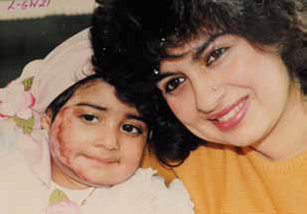 Someone in the UK is accidentally burned or scalded every two minutes and at least 12 patients a day are admitted to hospital for several days as a result of a burn injury. Many of these patients will require skin grafting and plastic surgery following the injury.
Someone in the UK is accidentally burned or scalded every two minutes and at least 12 patients a day are admitted to hospital for several days as a result of a burn injury. Many of these patients will require skin grafting and plastic surgery following the injury.
Skin grafting is the process where a layer of skin or cells is taken from a ‘donor’ site and placed over the burn wound to help it heal. There are many different types of skin graft, and though this technique has been in use for at least 200 years, there is still a huge amount of work needed to improve both the grafting technique and materials used.
Over the years since RAFT was born, it has conducted a significant amount of pioneering and influential research regarding treatment of burn injuries. Some of RAFT’s achievements in this field:
- Developed a life saving technique using skin from deceased donors to treat those with extensive burns
- One of the first research Institutes to perfect a method of growing skin cells in the laboratory, for use in skin grafting
- Clearly demonstrated the importance of using a supportive dermal base layer when grafting using skin cells.
- Improved our understanding of how nerves and blood vessels grow into skin grafts.
- Conducted influential research to further the understanding of the scars that form after burn injuries
- Defined the link between bacterial wound colonisation and severe scarring after burns, which influenced the treatment method for burns.
More recently, the development of the Smart Matrix® by RAFT could bring us closer to the day when many serious burn injuries will be treated without a skin graft. Click here to learn more about Smart Matrix® and RAFT’s wound healing research programme.
